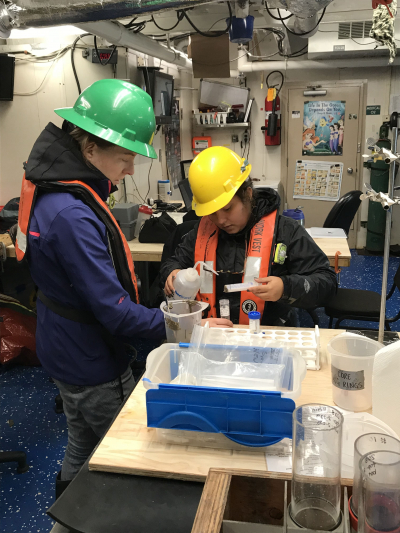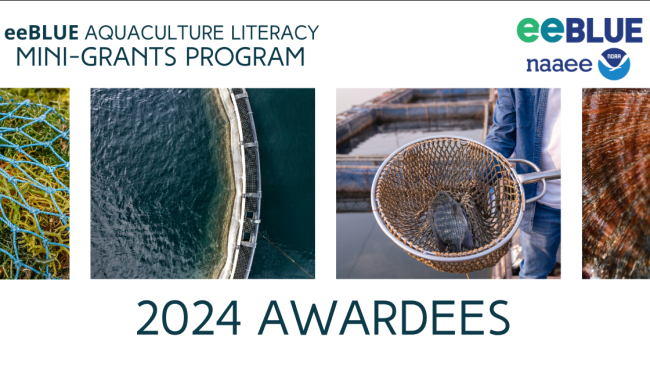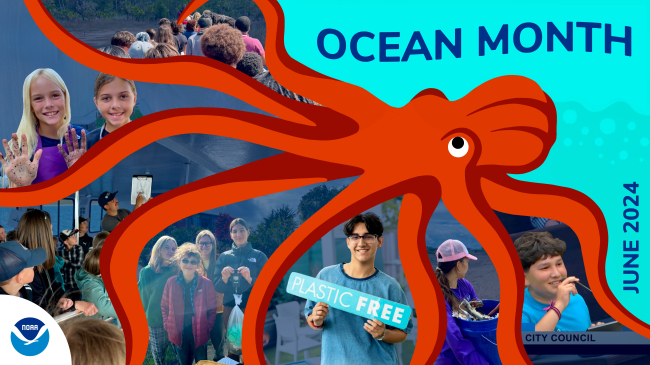NOAA scientists and graduate students have returned from a sediment sampling research cruise, which took place in the Gulf of Maine aboard NOAA Ship Nancy Foster from October 2-10, 2018. The cruise was not only a chance for NOAA scientists to gather information on harmful algal blooms, it also gave two graduate students an opportunity to get their feet wet on board a NOAA vessel. We caught up with them about their experiences.

Leslie Irwin (left, NCCOS Silver Spring), Anthony Lima (center, graduate student at University of Texas Rio Grande Valley), and Dave Kidwell (right, NCCOS Silver Spring) carefully remove a core of sediment collected by the Craib corer from the bottom of the Gulf of Maine. (Image credit: NOAA)
Anthony Lima and Wanda Ortiz Báez are graduate students connected with NOAA partnerships that enable students to take part in NOAA research, gaining first-hand experience in Earth science careers. On this research cruise, NOAA’s mission was to collect sediment samples to contribute to NOAA’s forecast of harmful algal bloom (HAB) events along the New England coast. NOAA scientists can predict the magnitude of harmful algal blooms for the following summer by mapping the presence of cysts, the seed-like stage of the algae, in the sediment during the fall months. Anthony and Wanda shared how they each contributed to the research effort, as well as some observations on working at sea and how they built their STEM (science, technology, engineering, and math) careers.

Anthony was drawn to science because of his need to take on big challenges. “I've always been interested in working on complicated problems that could potentially have many different solutions,” he says. “This, combined with my admiration for marine science, makes fishery management intriguing.”
Anthony is a graduate student supported by NOAA’s Educational Partnership Program with Minority Serving Institutions (EPP/MSI). He attends the University of Texas Rio Grande Valley, a partner institution of the NOAA Center for Coastal and Marine Ecosystems offsite link. NOAA funds four Cooperative Science Centers (CSCs) at Minority Serving Institutions through EPP/MSI. The CSC grants are awarded to MSIs to conduct research, build institutional capacity, and increase the number of undergraduate and graduate students, particularly from underrepresented minority communities, in NOAA mission sciences.
Anthony is pursuing a graduate degree in ocean, coastal, and Earth science, specifically studying fishery management in the Gulf of Mexico. His research examines how different agencies develop communication and trust in the Gulf of Mexico fishery. Being involved in a NOAA EPP/MSI CSC has given Anthony unique career development opportunities. He reflects, “I have been able to network and learn with students and professional scientists all across the country in various aspects of marine science.”
On the research cruise, Anthony helped operate the conductivity, temperature, and depth (CTD) device used to record ocean conditions. He also collected sediment samples and processed them in the wet lab. Aboard the vessel, Anthony learned to be flexible and adapt to the changing environment. “The biggest adjustment to life on a research vessel,” he says, “is that no matter what plan you make, weather and equipment are ultimately in charge.”

Wanda spent her formative years exploring the natural beauty around her island home of Puerto Rico. “I can't remember a time in my life when I didn't want to become a marine scientist,” she says. “These experiences ignited in me a curiosity and profound admiration for the ocean and all the creatures in it.”
Wanda works with the National Sea Grant College Program, which aims to create and maintain a healthy coastal environment and economy. The Sea Grant network is a partnership between NOAA and 33 university-based programs in every coastal and Great Lakes state, Puerto Rico, and Guam. Wanda works with Puerto Rico Sea Grant offsite link, located at the University of Puerto Rico Mayagüez Campus, where she is pursuing a master's degree in biological oceanography. She is part of the communications team at the university’s Sea Grant office. Wanda is interested in a career focusing on shark biology and ecology and is thankful for the opportunity to be involved with Puerto Rico Sea Grant. “NOAA and Sea Grant have provided me with experiences that can help me shape my future for the better,” she says. “Thanks to this, I'm even more motivated to continue pursuing a career in marine science.”
One of Wanda’s responsibilities on the research vessel was to carefully maneuver the Craib corer, a sampling device used to collect a core of sediment, into the water. She then collected and processed the sediment samples in the wet lab.
Wanda and Anthony have learned that gaining experience is extremely important to pursuing a STEM career. Wanda says that spending time in the field “keeps fresh what you already know and provides knowledge that you could have not learned otherwise.” Wanda’s STEM career thus far has given her the privilege to meet other scientists and learn from their stories and experiences. Wanda advises aspiring scientists, “Make yourself available for as many opportunities as you can. Most importantly, never stop learning, even if it’s not directly related to your field.” Anthony also has words of encouragement for students who are interested in pursuing a STEM career. He says, “I have seen great opportunities in STEM careers to work with all sorts of fascinating science and technology. There is something for everyone; nature, technology, innovation, and creativity.”
Anthony and Wanda’s unique opportunity allowed them to engage and learn from seasoned NOAA scientists. Dr. Terry McTigue, Ecologist and Chief Scientist of the research cruise, emphasized, “Wanda and Anthony were outstanding additions to our team. They immediately became an integral part of the operation and contributed greatly to the success of this year’s cruise. I hope they found the cruise valuable. We certainly valued their work.” NOAA partnerships with colleges and universities through programs like Sea Grant and the Educational Partnership Program with Minority Serving Institutions Cooperative Science Centers create opportunities that prepare students for careers in STEM-related fields.




